
















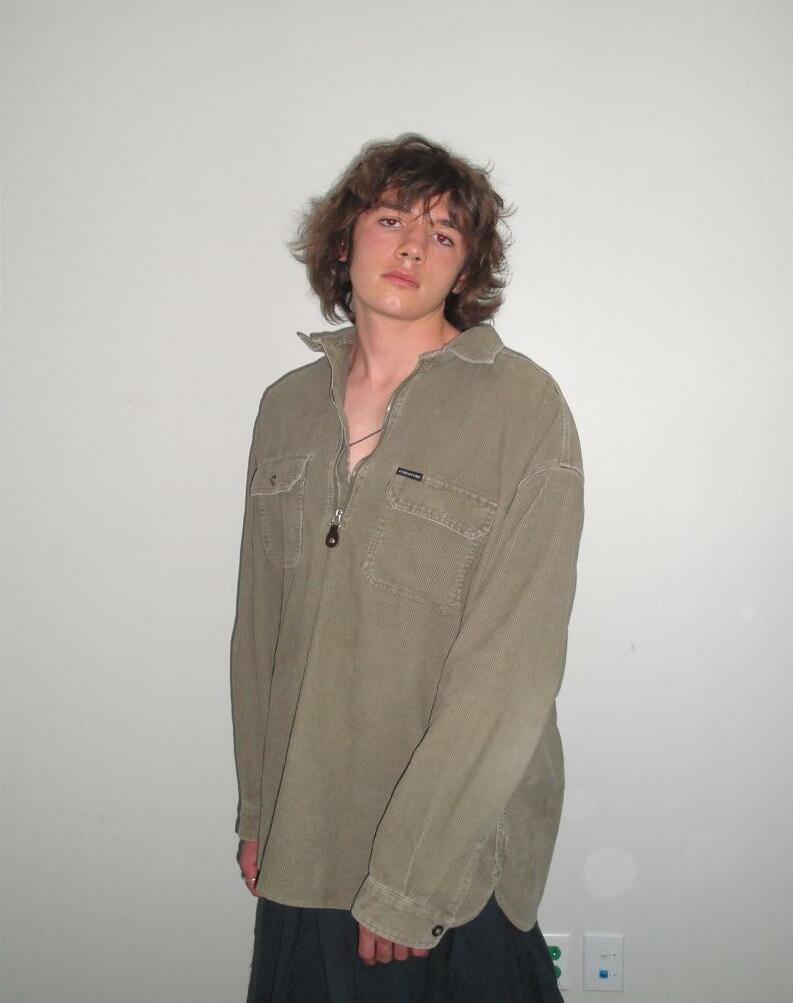
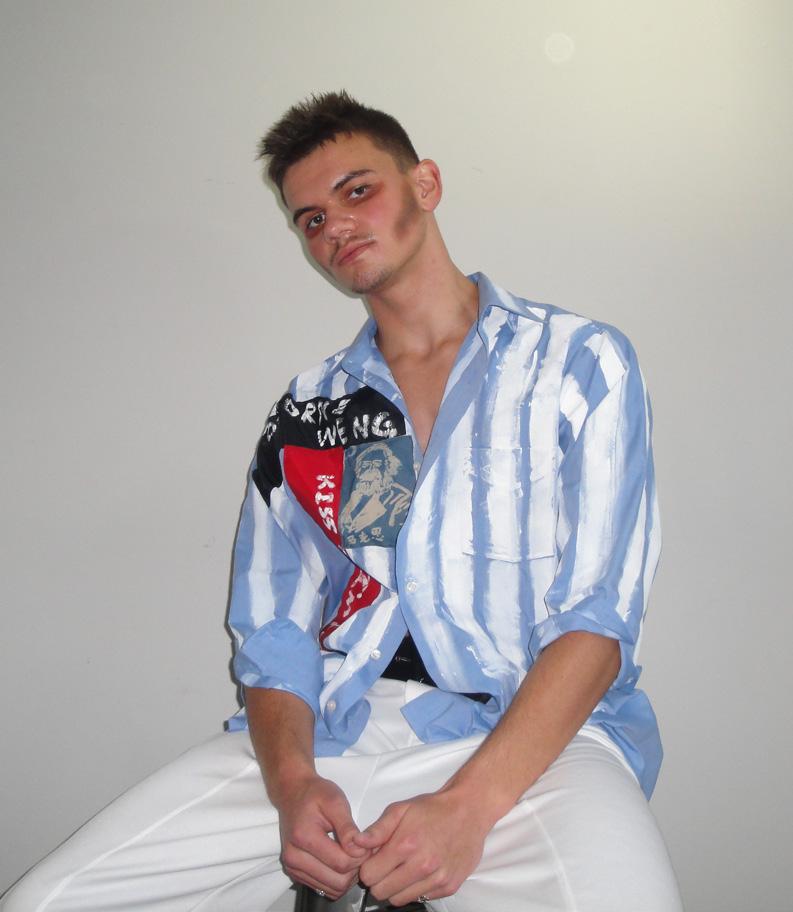
Roam Boulder is CU Boulder’s first life and style publication. Roam aims to represent a diverse compilation of voices in order to cultivate a platform that engages and inspires dialogue surrounding fashion. Roam provides quality insight on Fashion, Lifestyle, Culture, and Art. Through its journalistic integrity, Roam seeks to deliver a variety of perspectives to engage with the Boulder community through our issues in both print and online.


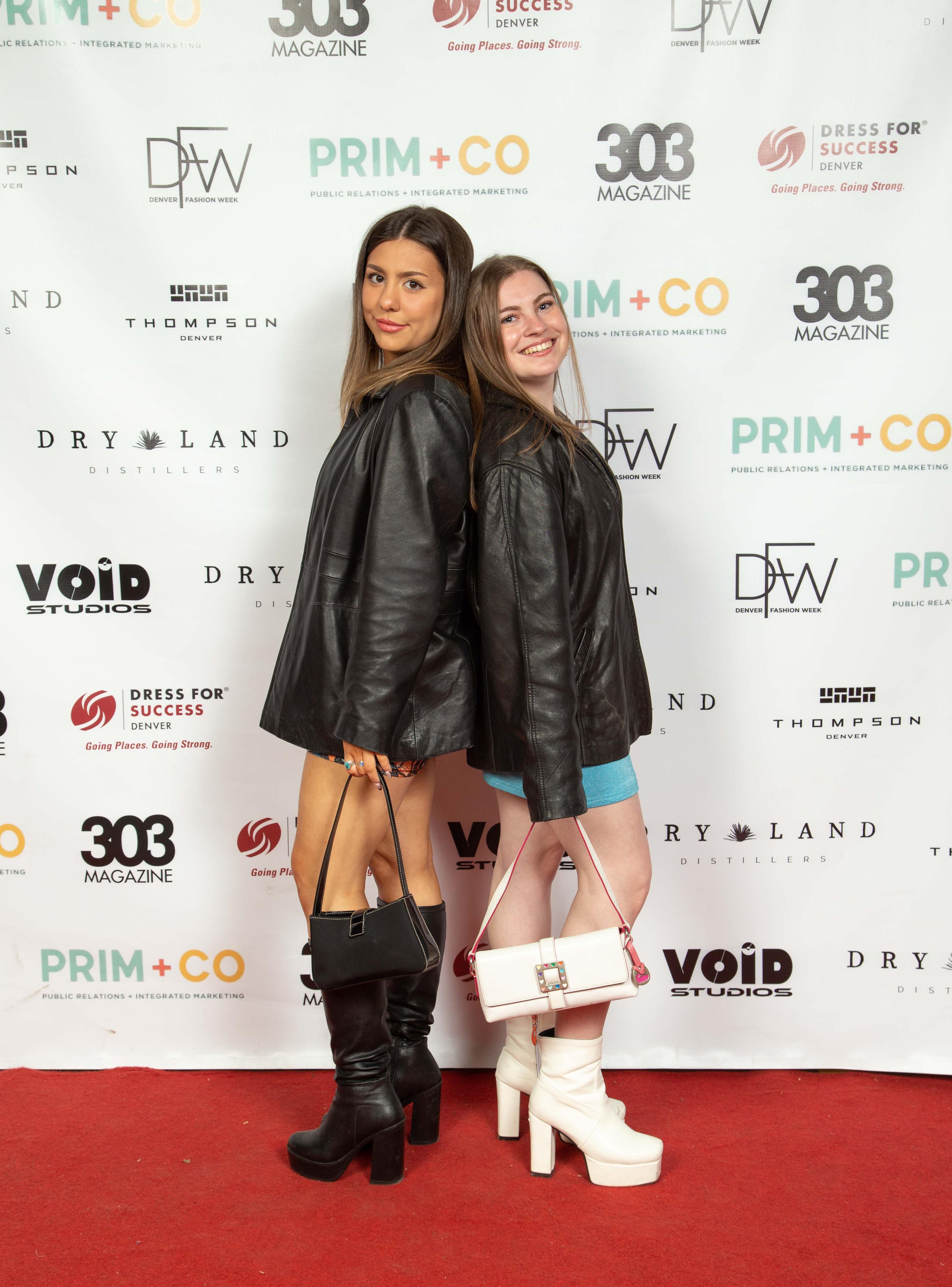
Welcome to Roam Boulder! We are back and better than ever, introducing our first Print for the 2022-2023 year. Roam Boulder is an ever-changing publication and we strive to push boundaries. As we continue to grow and evolve, so does our mission. This year we are focusing on using our platform to represent voices in the CU community.
Lately, we have been feeling like our world is looking a little dystopian. Instead of trying to ‘go back to normal’, in this issue of Roam, we want to run with this dystopian idea to make a statement. Our October Print stands for overcoming adversities together. This magazine is built with the intention of community and support as well as the idea that you are never alone.
Roam Boulder was founded on the principle that nothing is guaranteed and everything can change in the blink of an eye. As Founders, we do not fear failure, but rather embrace it. As a result of this mindset, Roam is built on the idea that taking risks and rising to a challenge is the only way to grow. Without that initial leap of faith, you may never know what you are capable of. This belief has manifested itself in the momentous growth of Roam Boulder throughout the past year.
Roam Boulder is a community of creatives with shared passions for fashion and the arts. Our hope for our members is to challenge each other to grow and become the best versions of themselves. By pushing limits, you can open up a world of endless possibilities and instill newfound confidence.
We are extremely proud of our 140 active members that took action and stepped up to the challenge of creating our October Print. We proudly present you with RISE.
Julia Belian Aspen Pasikov EditorThe theme of Roam’s October edition, Rise, encourages individuals to reflect on how we face hardships and empower ourselves and others. We wanted to focus on students here in Roam who have risen to the challenge of creating a fashion magazine. By interviewing three of our stylists, we hoped to learn about their interest in fashion and recognize their hard work. We asked about some things that have helped them so gracefully, not only rise to their own creative challenge, but also have helped our models and photographers rise.
Mia DiNorcia is a sophomore studying criminology and economics with a French minor from Evergreen, Colorado. Her passion for art and design started when she was taught how to sew by her aunt and grandmother growing up. DiNorcia gets her design inspiration not from one particular designer; but rather from her own mixing of graphics with self-created images. Lately, she has focused on themes of recycling and sustainability while thrifting and has then gone on to create her own custom pieces with thrifted clothing by then painting, drawing, and using stencils to transfer graphics. Some of her favorite DePop brands include Tripp NYC and Affliction. She has always aspired to go to art school, and one of her favorite parts about content is adding her “own flare.” Her favorite aspects of fashion include sewing, thrifting, accessorizing, and finding a great piece she can turn into her own work of art. DiNorcia’s goals for herself as a designer include making new pieces and pursuing her visions.
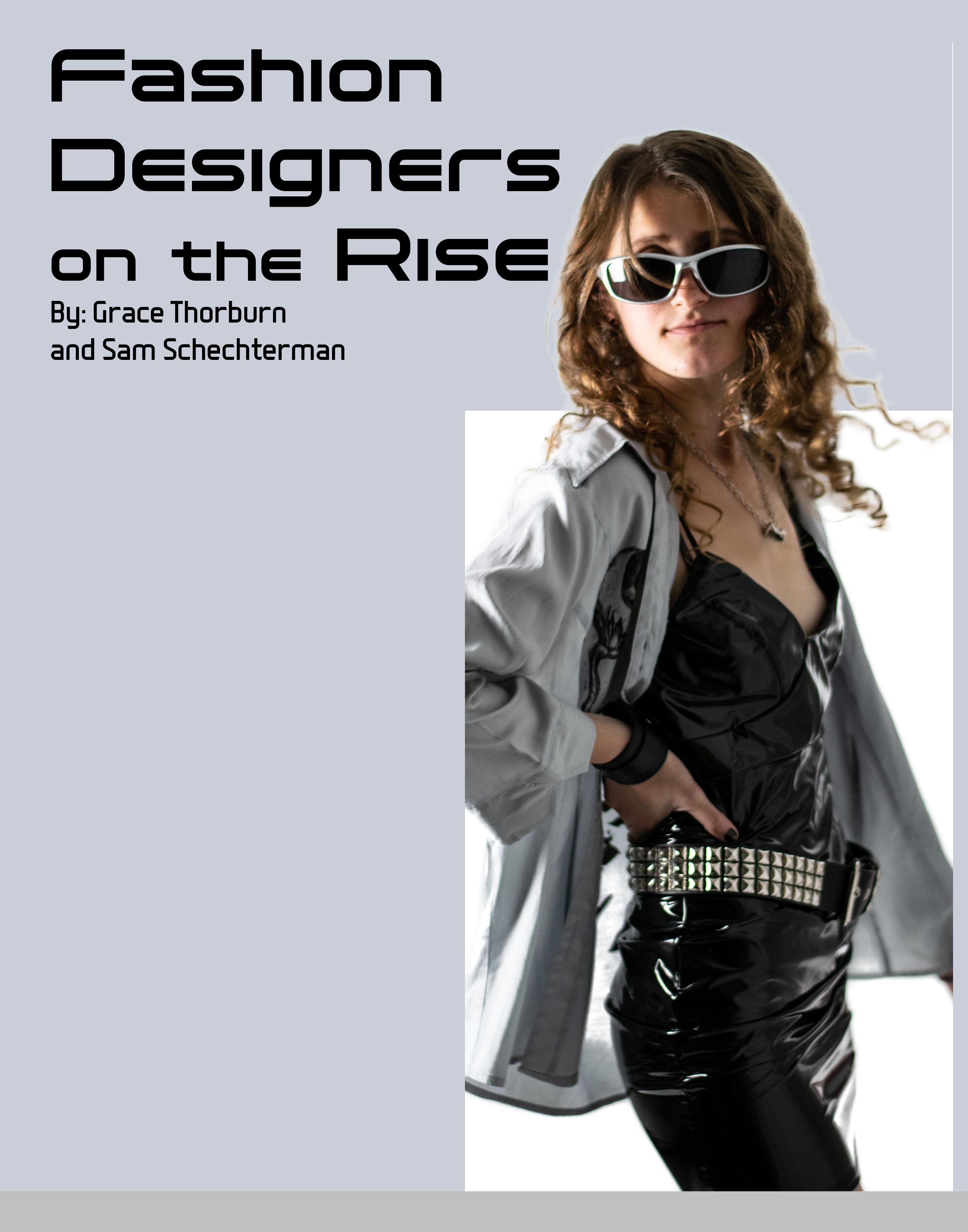
Osborne Weng is an international student from Beijing, China, studying psychology with a minor in classics. His designs are inspired by a wide range of designers, including Vivienne Westwood, Alexander McQueen, and The Sex Pistols. Fashion is a way for Weng to express himself, and he adores “fancy stuff.” Weng’s passion for fashion was something he discovered on his own, and he views haute couture as a way for him to express his feelings via fashion. As most young designers do, he enjoys finding simple thrifts, upcycling old clothes, and then adding new designs and cutting to “revamp” them into his personal style. Weng hopes to continue fashion as a hobby and maintain his passion for it and see where it takes him. His iconic jacket, one that boldly proclaims: “Kiss me, I’m punk!” shows his love for 1980s British Punk. Rachael Cunningham is a junior this year studying fine arts. She is from Highlands Ranch, Colorado, and is mainly inspired by art and its beauty. Cunningham has been enjoying combining her interests in art and fashion to create wearable art or fashion pieces that are a work of art. She gets her design inspiration from surrealism, art, and fashion with futuristic touches. Her first project, which was a helmet created from her dad’s old technology from his job as a computer scientist, launched her interest in surrealist art and fashion. Cunningham’s favorite aspects of fashion include playing with different fabrics and exploring fashion as a form of art. She believes fashion and art can change our perception of the things around us and enjoys exploring her curiosities surrounding art and seeing how combining fashion with other forms of art plays into that duality. Cunningham’s goals for herself as a designer include further exploring fashion as a form of art and diversifying her skill set.
Learning about our stylists only helps us appreciate them even more. The themes of sustainability that DiNorcia has incorporated recently; the culture shock that Weng mentions as an international student; and the intersection that Cunningham creates through her love for art and fashion have produced bold, creative, and distinctive looks. This has not only showcased their own talent but has also helped our models rise up.
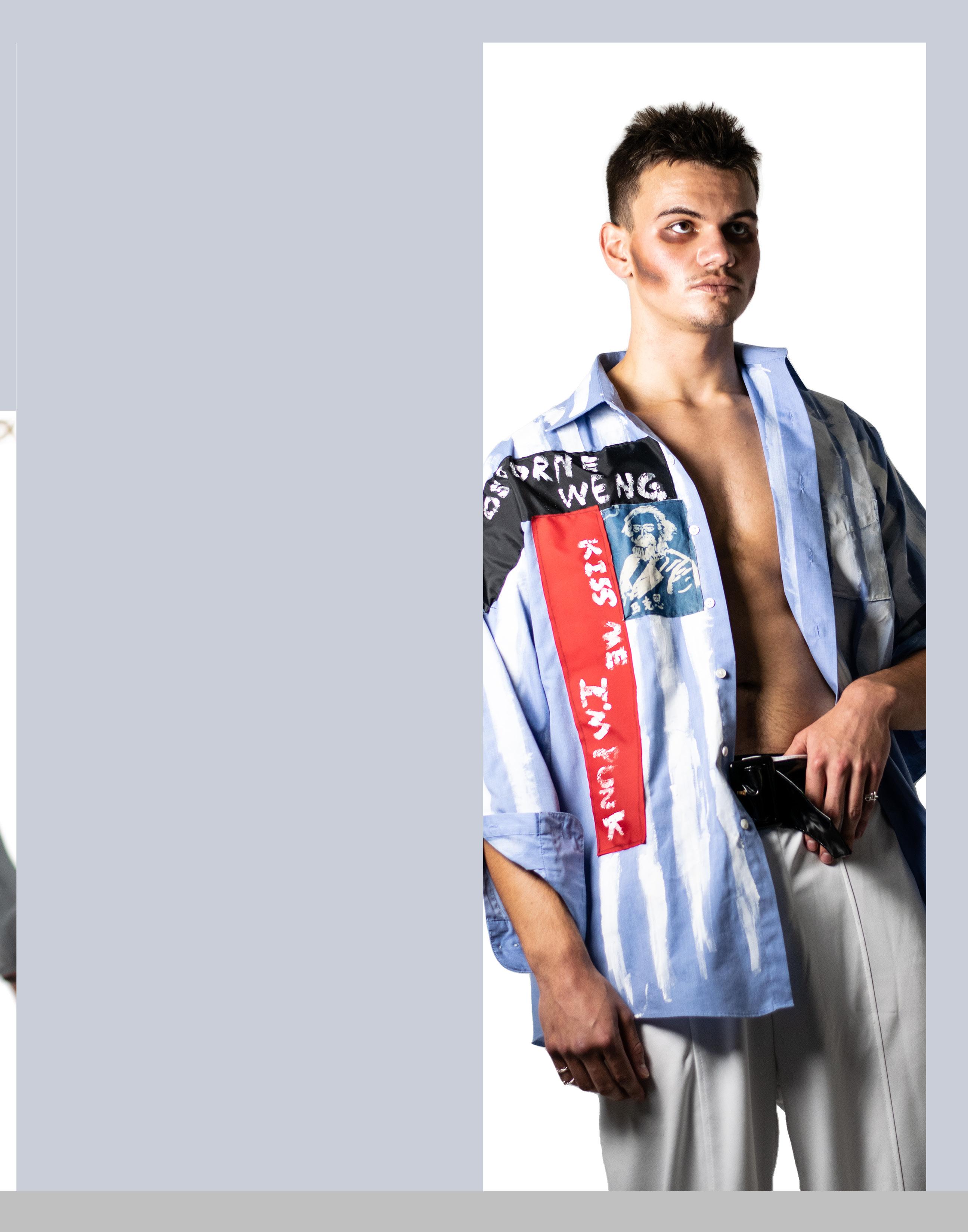
They’ve created more than just a new genre, they’ve created a new world within their music. When asking Denver-originated band “Purple.” how they would describe the music they make, both artists came to a blank. “I think it’s a bit of everything, really. The guitar parts have jazz roots, the drums come with a bit of pop rhythm, while the bass has an EDM feel to it,” says University of Colorado student Jude Shaw. Nick agrees while adding that he listens to a mix of rap, indie, and electronic music, which he feels influences their sound.
greatest feeling when it finally came together.” Nick recalls watching as their listeners began to grow the moment their song came out. “I remember getting all excited when it said that five people were listening to our song, then before we knew it, we were surpassing 10,000 streams.”
“My sister started taking guitar lessons; she didn’t like it,” recalls Jude, “so she let me use the rest of her lessons. After that, my dad said that if I didn’t stick with guitar, then I’d have to play sports…so here I am” Jude laughed at this childhood memory. It was around this same time that Nick and Jude met: fourth grade. Their first interaction was on the playground, and from there, “Purple.” was born.
Following the 4th-grade talent show, in which they won 1st place (obviously), these artists have been seen playing at Fox Theater, they’ve had shows in Denver, and have released four singles, including Rolling Hills, which received over 24,000 streams on Spotify alone.
“Rolling Hills took me about four months to produce,” says Jude, “We’d go after school whenever we could. I remember it was the
When asked how social media has affected their music journey, both artists agreed that if they had promoted their releases on these internet platforms, their streams would have increased by thousands. “Social media is so much bigger than any of us realize…you look at all of these artists who started on TikTok; none of them would be where they are now without it,” says Jude. While social media has been a controversial topic in the music industry as of late, “Purple.” agrees that it is ultimately a positive new turn for the industry. Going forward, it’s a way for artists such as Jude and Nick to turn this hobby they’re so passionate about into a whole business. It’s a door to so many more possibilities. “It turns it into more than just an art; it becomes a business,” Jude states. It teaches these new, young, upcoming artists about marketing, analytics, and

entrepreneurship. Your music becomes your product, and you become the boss. Welcome to the world of business.
But the line between social media and authenticity is a tightrope that you always have to keep your balance on. And “being authentic is the key to being a successful musician,” according to Nick. “Authenticity is of the utmost importance but just putting in the effort to make something happen - that’s the simplest key to success.”

This is the type of energy that was found to go so well with this month’s edition of ROAM. It’s artists like these who RISE past expectations and RISE through hardships…it’s about “RISING to the occasion,” exclaims Jude Shaw when asked why “Purple.” fits so well into the October edition.
“Purple.” can be streamed on platforms such as Spotify, iTunes, Apple Music, Pandora, and Amazon Music.
They’re planning a new release by the name of “Boulder” in the upcoming future.





 By Hallie Hannum
By Hallie Hannum
Dystopian.
What images spring to mind when that word jumps into play?
Merriam-Webster describes the word as “an imagined world or society in which people lead wretched, dehumanized, fearful lives.” Oxford English Dictionary defines it as “a person who imagines or foresees a state or society where there is great suffering or injustice.” Describing those fictional places where oftentimes society is painted as a utopia, somewhere without flaws in government or civilization, but rather has many issues deeply rooted in the people or government systems or the society as a whole.
Although the dystopian literature that we think of, those ranging from the 20th century such as Ray Bradbury’s “Fahrenheit 451” or the current 21st century like “The Hunger Games” trilogy by Suzanne Collins, the stories that depict fictional societies with seemingly perfect systems date back to the 1500s with Thomas More’s “Utopia” originally written and published in Latin and following that similar story idea came Jonathan Swift’s “Gulliver’s Travels” written in 1726, and others like it. But unlike the modern depictions of dystopian novels, these books more often wrote about fictionalized islands or undiscovered land since a big portion of the earth hadn’t been explored yet. But the popularity of literature depicting dystopian/utopian societies wasn’t significant until around the 1800s with Edward Bellamy’s “Looking Backwards.” The popularity of dystopian literature has been largely steady throughout the decades, but it was still only in adult fiction; it wasn’t until the 90’s that we started seeing it creep into the young adult age group. Everything completely flipped in the 2000s, and there was a massive uprising in young adult dystopian fiction with novels like “Mortal Engines” by Phillip Reeves in 2001, “The Host” by Stephenie Meyer in 2008, and, of course, “The Hunger Games” by Suzzane Collins in 2008. Everything changed with “The Hunger Games,” and suddenly, every reader was dissecting dystopian novels. If you were to ask any teenager or college student about dystopian literature, they would most likely be able to name the trilogy that made such a massive impact on the young adult literature age group. “The Hunger Games” is a three-book series about a future where what used to be North America has been transformed into Panem and split into 12 districts, once 13, with The Capitol overseeing them. We follow Katniss Everdeen, a 16-year-old girl from District 12 who volunteers to take her 12-year-old sister’s place in the annual Hunger Games, an event created by the Capitol to make sure the districts don’t rebel against the higher-ups where a boy and girl from each district are sent to the Capitol and then to an area to fight to the death until only one winner remains. Suzanne Collins had originally only intended for there to be only one book. Instead, she created two more: “Catching Fire” and “Mockingjay,” and the series was a hit. They were quickly made into a four-part series, with the first movie released in 2012, starring Jennifer Lawerence and Josh Hutcherson as our two main characters. The movies grossed a total of $2.970 billion at the box office. The path that “The Hunger Games” created was closely and quickly followed by other authors trying to
make novels that would appeal to the new readers of this genre including, “Divergent” by Veronica Roth, “The Maze Runner” by James Dashner, “Legend” by Marie Lu, “Shatter Me” by Tahereh Mafi, and several more. The “Divergent” and “The Maze Runner” series were also adapted for the big screen and attracted even more attention. Today the list for young adult dystopian fiction has been on the decline since its massive spike in the 2000-2010s, but that time of literature and those novels remain a popular topic. Most readers will usually, at the very least, know the names of those big series that became such a staple. There are still devoted and dedicated fans of these novels even years after their first publications. The dystopian genre allows a large amount of room for authors and readers to explore topics that affect daily life and society, such as the environment, government systems, and economic inequalities. Even in fictionalized versions of our world, there are still the same issues that we deal with today, which is also a big part as to why dystopian novels are popular. With any genre, you’re allowed to delve into various topics but dystopian literature paints a different picture of a future with these heightened levels of our same issues. For example, “The Hunger Games” is a prime display of economic inequality in the country of Panem and a totalitarian government where those who try to stand up and fight back against the government’s oppression are killed, and the rest are given a lesson as to why they shouldn’t repeat the same mistake.
The language of dystopian literature gives those who read it a way to imagine our future and how it’s possible to get even worse when the hands of the countries and civilizations are upheld by the wrong people. In our world today, we see examples of scenes often portrayed in dystopian literature, such as the Black Lives Matters movement and other protests like it, the government taking away bodily autonomy from a whole group of people, our environments being disrespected and uncared for, and the effects of that on our health and lands. The unapologetic lens that is given to us through those novels allows us to sit and think about the possibility of these types of futures becoming a reality because it’s genuinely not as farfetched as we think. Dystopian literature has allowed whole generations and very specific groups of those generations to put actions to words and refuse to let our countries, cities, towns, and societies become the same as the words on those pages. Dystopian literature has allowed a generation of people to imagine how they want to react to those situations and stand up for what they believe and against oppressive systems trying to push them back down.
When you think of the word dystopian, what future do you see?
“I grew up a little, and I gradually began to figure out that pretty much everyone had been lying to me about pretty much Everything,” Ernest Cline, “Ready Player one.”
Over the past seventeen years, Washington-based artist Brandi Carlile has built a discography that holds many successes. In the past, Carlile has stuffed her songwriting with impactful emotion, and her seventh and latest album, “In These Silent Days,” is no different. It is a testament to the masses, uncovering the restless thoughts that unprecedented times and adversity provide. Individuals across the world were met face to face with the harsh uncertainties of life during the Covid-19 pandemic and the recovery years to follow. Fear encased itself into reality, providing humanity with the imposing thoughts of what is truly important. While several individuals were pondering, Carlile formed these ideologies and emotions into poetry. The 41-yearold artist’s new album is honestly raw and strikingly comforting.
After capturing the attention of the masses with her sixth album in 2018, “By The Way, I Forgive You,” which earned the artist three of her six Grammy Awards, Carlile rolled into her seventh with just as much passion and eagerness to expose suppressed emotions. However, this time around, society had begun to shine its vile colors. Not only did Covid run rampant, but society was met with riots, protests, and political unrest. Although these are events that are in no way affiliated with hope, Carlile flips the script and turns these events into learning lessons and personal reflections through her immaculate songwriting talent. Being a mother of two children is very influential in the music
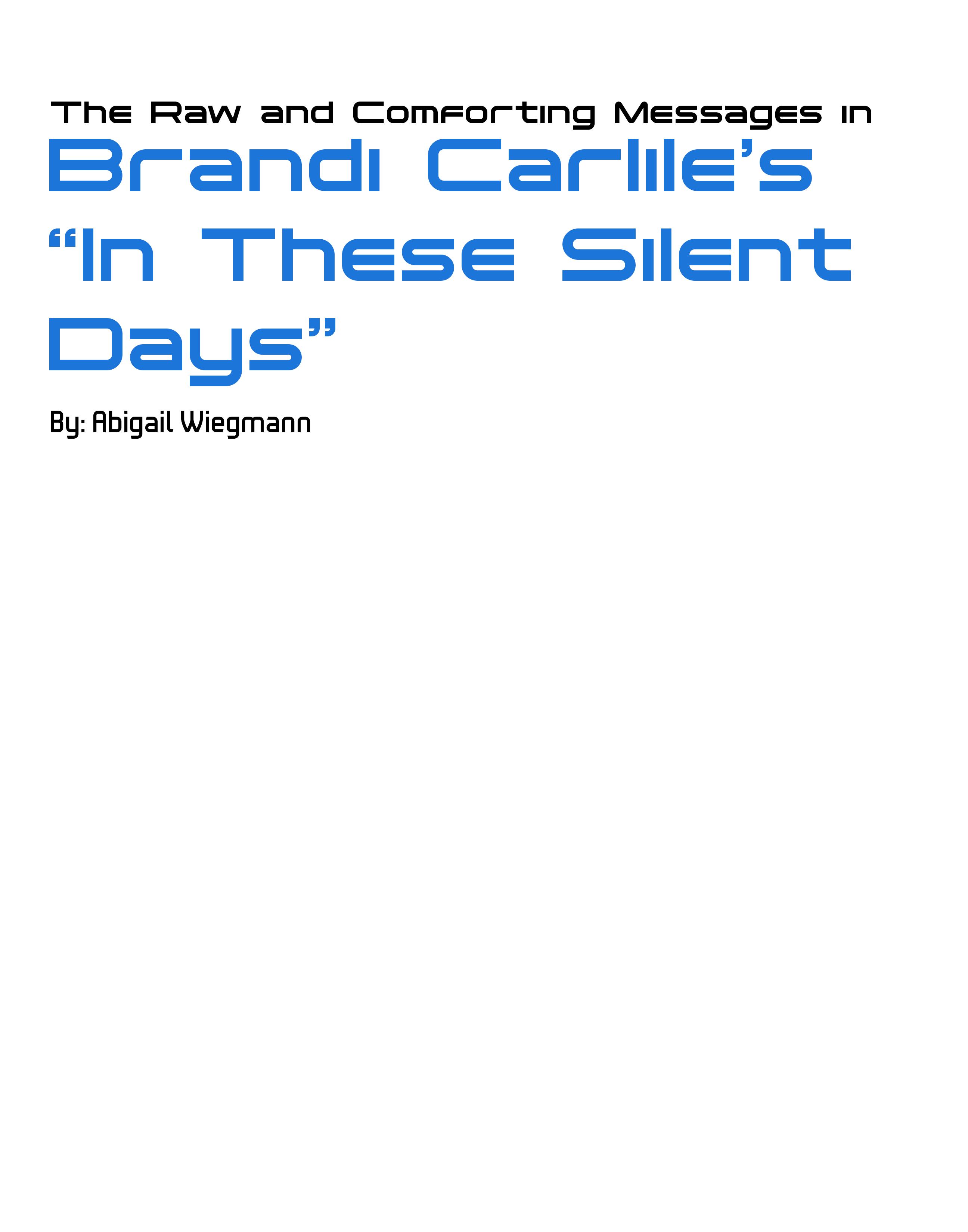
that she produces. Several of the songs within this album directly reflect on the message she is providing her children through the workings of sung poetry.
The way the words flow and meld together supports the musicality and the overall meaning: trekking through adversity with morality. The song “Stay Gentle” has a slow melodic quality with both acoustic guitar strumming and fingerpicking, that of a child’s lullaby. “Know to find joy in the darkness is wise, although they will think you are naive.” This line evokes an ideology that people are afraid to be childlike; that society slowly drains one’s ability to be gentle resonates. Naive is a callous statement towards an individual who is not a child. The connotation that someone is foolish or mindless stripping them of intrinsic authority. The song goes on to say, “keep the eyes of a child,” looking at the world through a lens of awe and grandeur, not deceit and animosity; the qualities that plague society. This is a forgotten art of thinking; society is so engrossed in how to rise to the top by any means necessary that as time progresses, people replace their values and forget what it means to be gentle. The artist’s voice reflects keeping peace within one’s self.
The song “You and Me on The Rock” displays the foundation of support through family, what- ever family may be to the listener, but specifically hones in on the foundation for
Carlile. The song illustrates the basic needs that the artist desires, her family, specifically her “rock,” Catherine, Carlile’s wife of ten years. The song has an up- beat vibe laced with piano, guitar, and drums providing a summertime texture. The song goes back to the theme of morality while adding to the importance of simplicity. “I built my house up on this rock, baby, every day with you,” solidifies that foundation of support, the fortified virtue of love that carries people through trying times. The lyrics turn in the mind to question what foundations of support surround us every day, and the raw emotion behind those discoveries. This song unlocks fears through words and emphasizes self-reflection, all while being whisked up in the upbeat melody.

It’s not a secret that people genuinely feared not only for their own lives but the lives that surrounded them during the Covid-19 pandemic. It was fearful that people would not be around in the coming days. The song “This Time Tomorrow” captures those honest thoughts and emotions of Carlile speaking to her children. The folky ease of the instrumental isolates the lyrics, achieving the sensation of a raw confessional. “You know I may not be around this time tomorrow… but I’ll always be with you.” This song truly plays into the religious side of Carlile and her relationship with God in her personal life. The song feels like the last goodbye, an uplifting farewell due to angst. It’s a constant reminder to look into the positive lights of life and encourage others not to be sunken down by “the deafening sound.” The artist’s voice of reason within this song and the others on the track has a strong correlation with the values of faith– a relaxed exchange with divine power.
“In These Silent Days” is a masterful album that builds emotionally to its conclusion. The entirety of the album, ten songs, encompasses the meaning of being human and possessing those raw and inflicting emotions. However, the artist’s gentle voice and her high register build an understanding of how people can apply the overall message to their own lives. Deep reflection is not always what people intend to experience when listening to an album, but the invigorating craftsmanship of this artist’s writing silently forces one to.
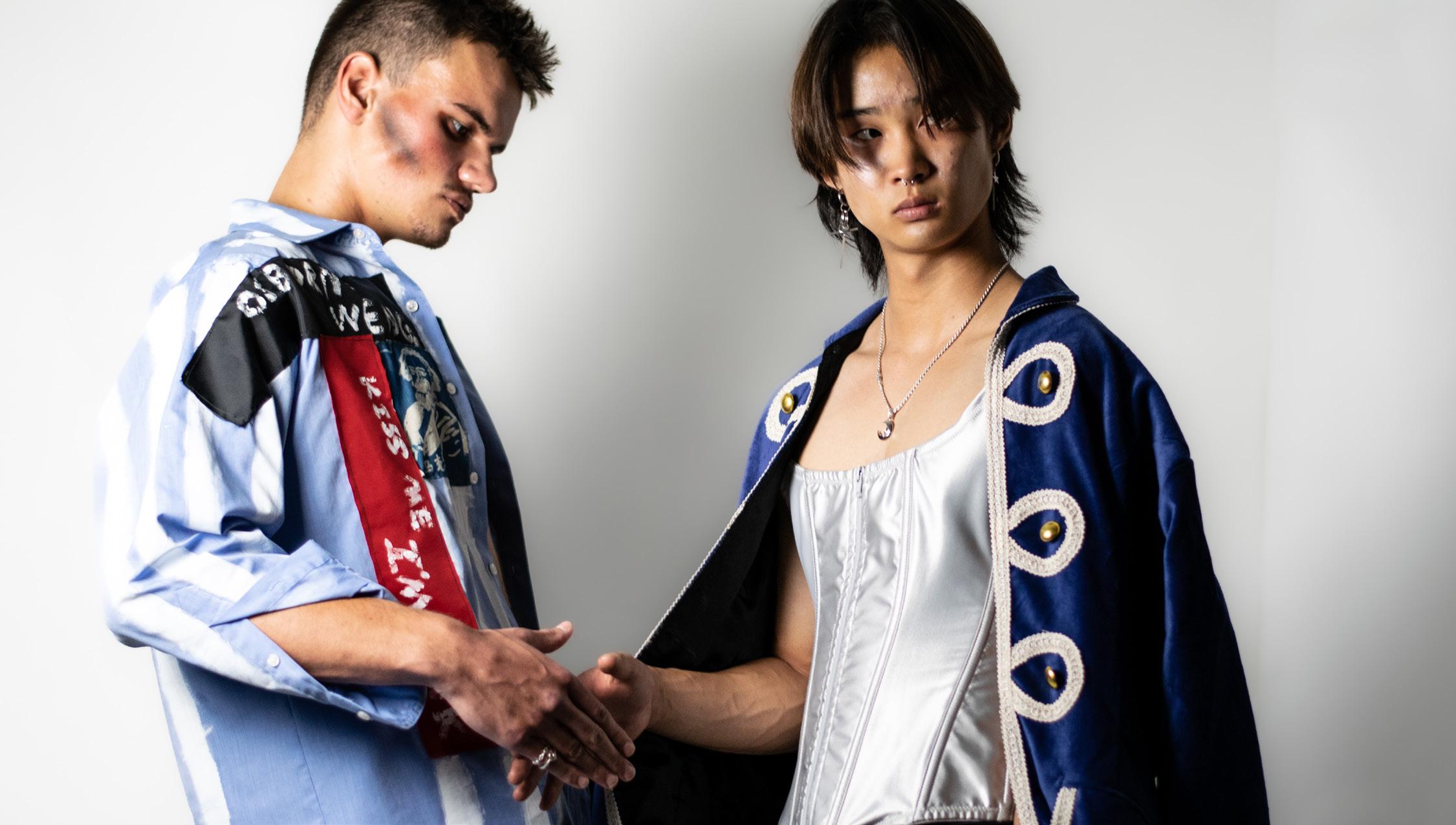

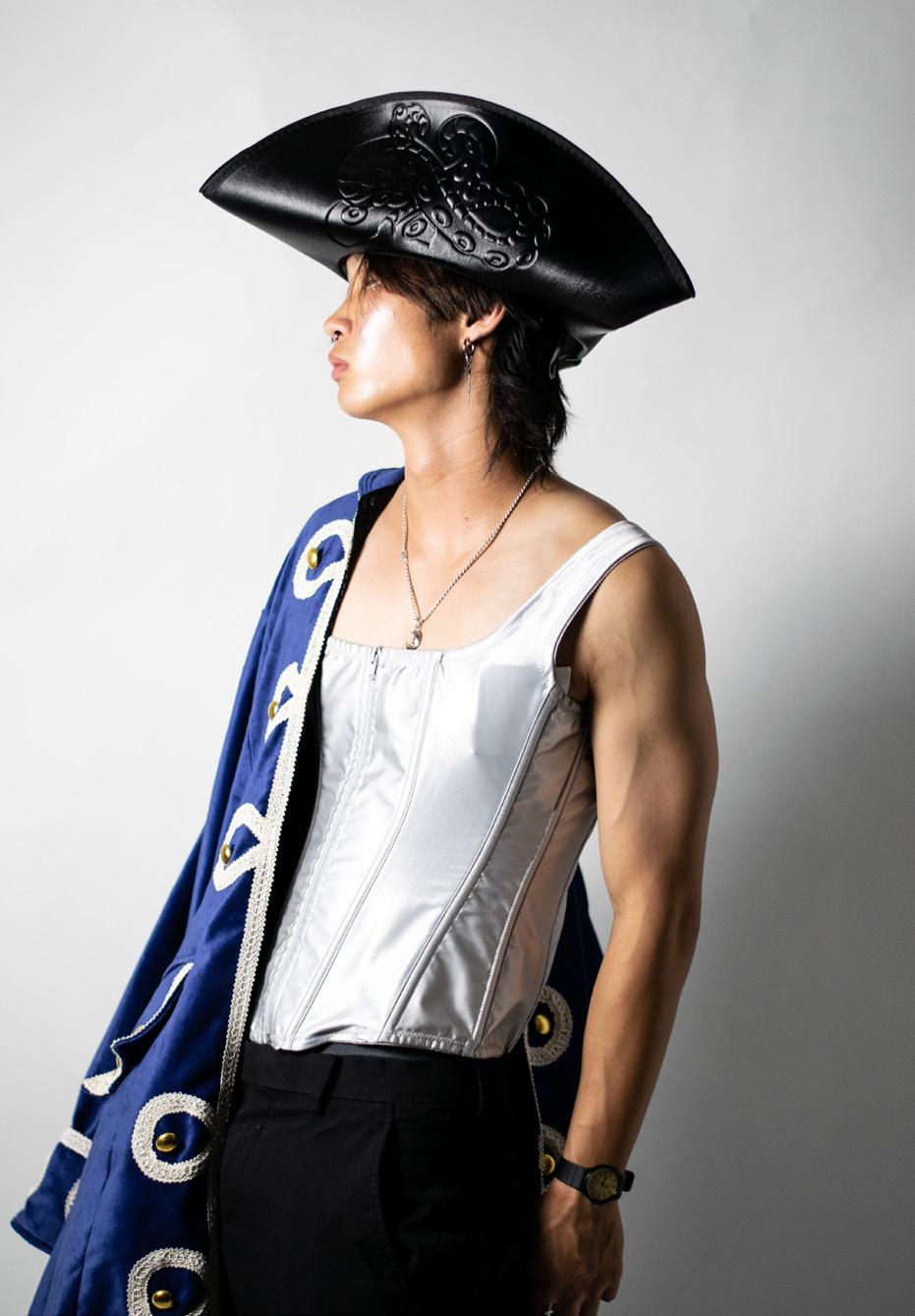
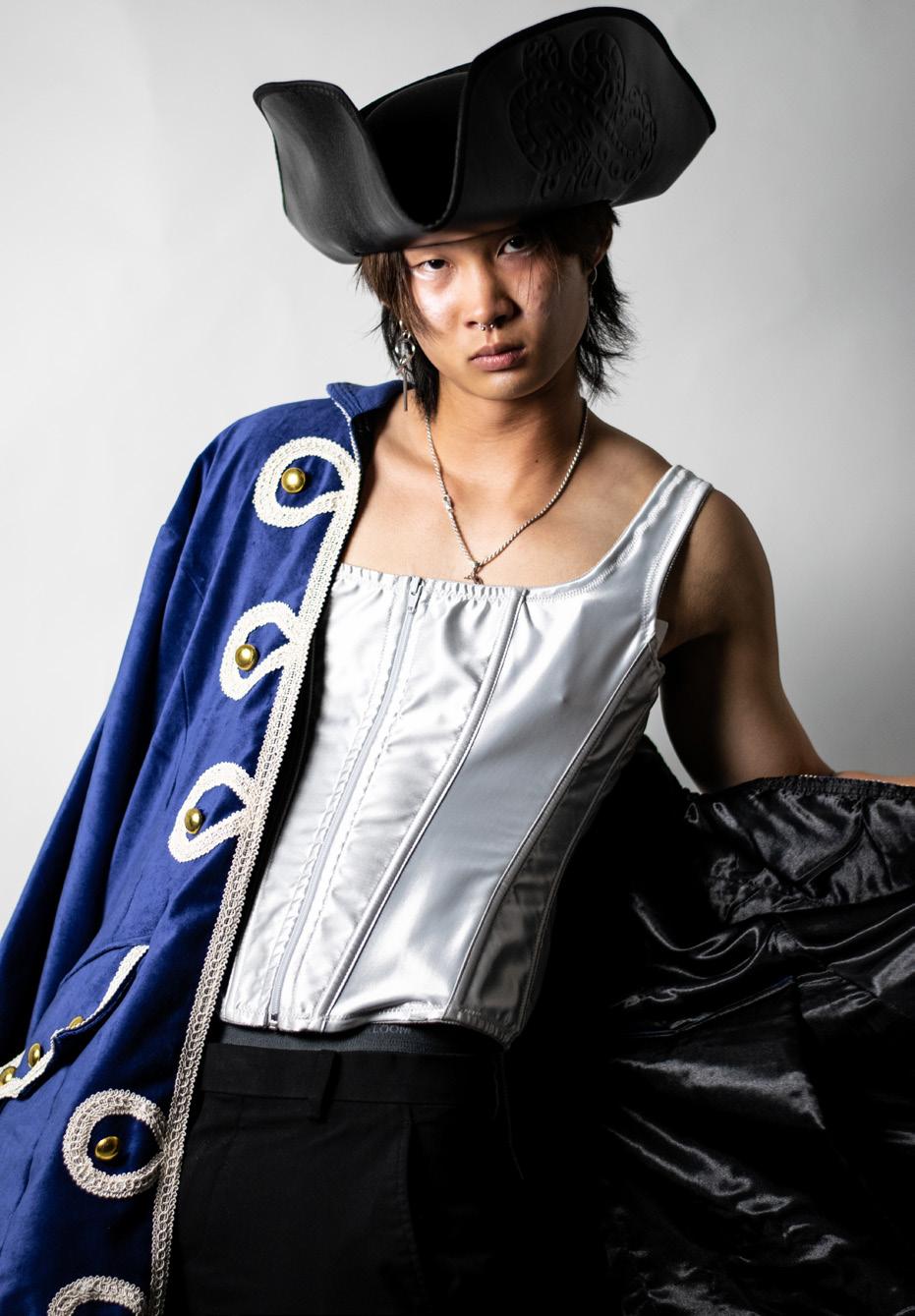
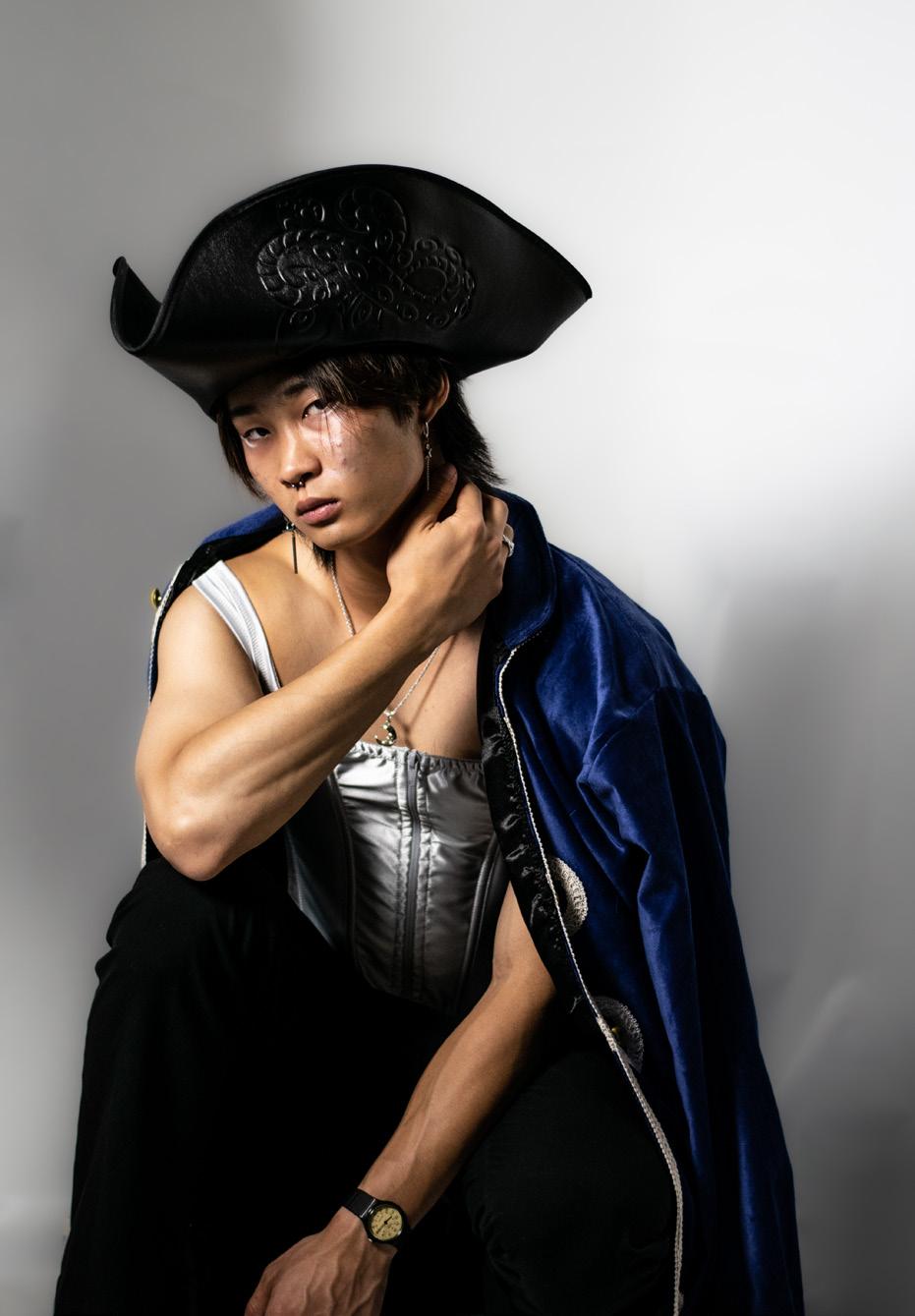
 RAKKEN RAMEN
RAKKEN RAMEN
Rakken Ramen is an authentic restaurant chain from Japan whose mission is to spread Japanese ramen to the world. They offer five or more ramen varieties based in a rich, tasty broth with silky, slim noodles. Once you place your order with a staff member, you take a seat, and before you know it, a robot comes rolling across the restaurant floor with your food. The robots aren’t self-sufficient—restaurant workers are still required to input orders, direct the robot, and transfer old dishes onto the robot—but the vibe is fun, fresh, and futuristic.
This robot has a name: “Alexa.” Alexa holds a series of vertical trays to hold customer orders. She almost looks like a rolling, red-and-white bookshelf. When given instructions to bring food to a table, which is done via GPS and programming, Alexa strolls on over with her piercing eyes. If you visit Rakken Ramen in Boulder, be sure to ask Alexa to tell you a joke; she loves telling corny jokes. Interacting with Alexa was a short, exciting experience, but it didn’t dominate the whole dining experience.
Customers who walked in were initially thrilled to see Alexa, but after they took a seat and were served their food, they returned to the typical behavior in a casual restaurant. Robots don’t define the restaurant’s experience; they simply enhance the operations and atmosphere.
These robots are not here to take employees’ jobs but to assist in the workflow. They add a flair to the place and take your dirty dishes away from the table. What’s not to love about that? The emergence and existence of robots in restaurants are officially here and here to stay.
Bartaco, located on Pearl Street, is a Boulder favorite for CU students and locals known for its upscale street food. When you enter the restaurant, you are greeted by relaxing, warm interiors that house woven basket light fixtures, mesmerizing photography, and a breathtaking bar in the center, bringing diners a much-desired coastal vibe. In addition, Bartaco has become known for its on-demand service.
During the COVID-19 pandemic, Bartaco evolved its service to embrace technology that could help limit contact between staff and patrons. For example, before you check in with a host at the door, join the waitlist via Bartaco’s app (or you can call in) to save yourself waiting time. They hold your name on the list for 30 minutes, and you are updated with text messages when your table is ready.
When you are brought to your table, you use your phone to scan the QR code, a small square displayed at the center of the table. The codes allow a menu to pop up on your mobile device’s screen. Each QR code is unique to the table, allowing diners to pay individually or together, simply through their smartphones.
The perk of this set-up is that my dinner guests and I were able to continuously order items from the menu without having to flag down a waiter. These solutions have made Bartaco more efficient, without sacrificing hospitality. You still have bright and energetic staff at your service when you need it.
Before the pandemic, ordering cards were on each table for guests to check off what they wanted and hand over. QR dining is essentially ordering from a card, just on a mobile device. The customer service was A+. Be sure to try the duck birria. It is a must-have, and the dipping broth completes it with such richness.

Birdcall is a high-quality, modern eatery with a fast-foot twist focused on all-natural foods, mainly chicken. The ambiance of this restaurant is stylish and homey, as it contains beautiful murals and throw pillows on the patio seats. Birdcall is redefining the fast-food industry with its cutting-edge technology and superior hospitality. They replaced humans with brightyellow ordering kiosks.
You are immediately drawn to these floating, unique objects as you enter. These objects were the design of Birdcall’s own kiosk software and structure. With a few taps on a touch screen, you build your order by choosing between the selection of sandwiches, salads, fries, drinks, and of course, sauces. As you build your ingredients, you get exactly what you are craving. Then, with just a swipe, you pay and take a seat. You can track the process of your food by keeping an eye on the countdown clock, but if not, no worries, you will receive a text message when your order is ready for pickup. Your food will be waiting for your arrival on shiny beehive-like shelvings—this ensures a rewarding customer experience.
The only front-of-house employee is a “bird tender” whose role is to process cash orders and spend time interacting with guests, which the self service kiosks allow them to do. Guest satisfaction is guaranteed.
This new kind of dining experience is extremely innovative, allowing a fast yet enjoyable experience. This is a great choice for busy bodies on the run; the service is fast.
A: New to Boulder, I’d left corporate America behind in favor of the more laid-back Boulder lifestyle. I was working in a health food store part-time and realized I needed to get serious and put my hippy days behind me. I made a list of what would be important to me: 1. To wear what I want 2. I didn’t want to get up too early, and 3. Something I can relate to. What came to mind was vintage clothing; I love it! In an effort to learn the business better, I applied at Easy Times clothing on the Hill and instantly found myself manager and buyer-woohoo! Some time down the road, the owner of Easy Times, also the owner of The Ritz, wanted to sell. And I wanted to buy! The bank required an in-state co-signer, of which I had none. My roommate, Lisa, suggested her boyfriend Phil would sign. He was picking her up at 7 and she said “he’ll sign it, just be there”. She was right. Less than two minutes after meeting him and telling him my idea, he said yes right away. It was a done deal, the year was 1977.
The space we occupied was a small portion of our current space at 959 Walnut, where we still are today. There was a machine shop and train car to the left, across the street a lumber yard teeming with stray cats. Down the street was the people's parking lot.
While we started out strictly vintage, vintage clothing became harder to find as it became a hot commodity and was scooped up by retailers in Europe and Japan. Meanwhile, people started coming into the store asking for costume-like items, like masks and boas; from there, The Ritz evolved. Vintage pieces became rentals, and we started selling new retail pieces in our costume and clothing boutiques. Once people began flowing to the store seeking costumes, particularly around Halloween, we embraced the costume element big time. UPS drivers would come and fill the office day after day with zillions of boxes, and would shake their heads worried for us. Only to return after Halloween to find almost no merchandise to be seen. It took 50 employees over the season, but it was always a triumphant success. This pivot into costuming inspired expansion: we increased our store size when the opportunity arose. The Ritz was, and remains, the place to be for Halloween and year-round fun.

A: It was called the Ritz before I became an owner. Due to the popularity of the Pearl Street Mall Crawl, TV news anchors were particularly excited to do feature stories about The Ritz on prime time news. Sometimes the segment would even be picked up nationally and aired all over the country. My friend Susan’s mom once called from Miami to say she was watching us on the 6 o’ clock news! The Ritz as a name was so iconic and well known, there was no changing it!
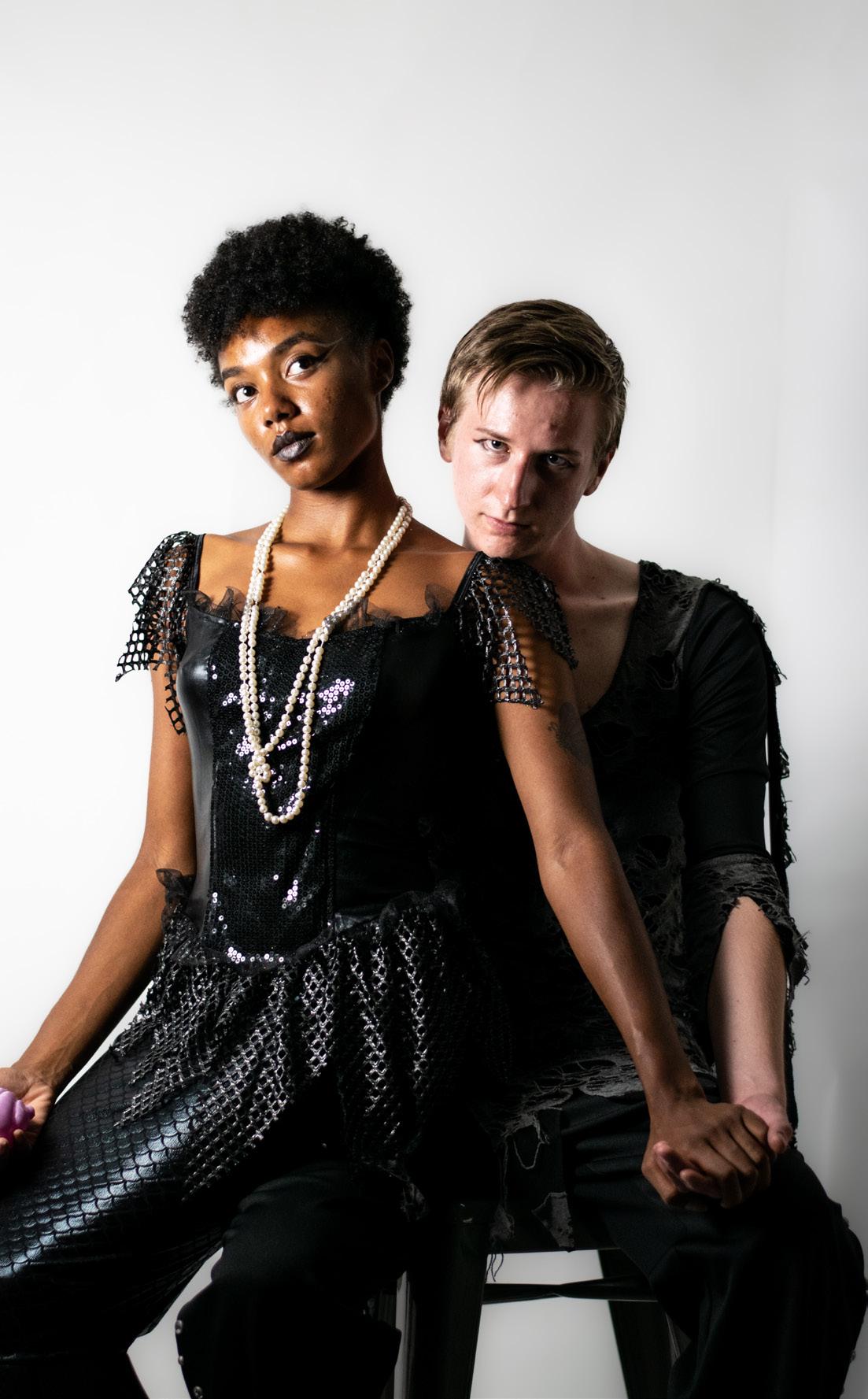
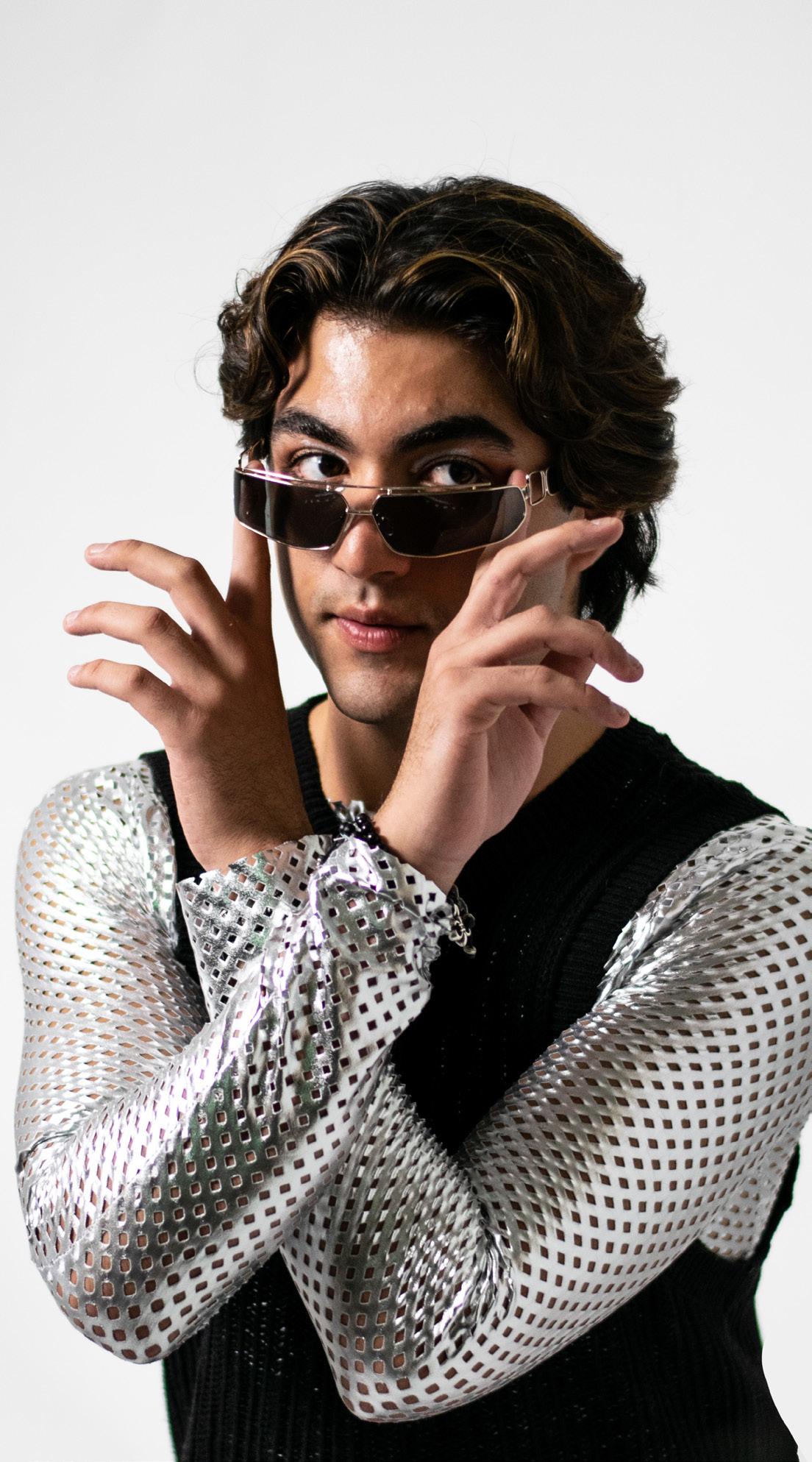
A: Having been open for over 40 years, we’ve seen our share of challenges. In 2008 the economy crashed. Everyone around us was cutting drastically back on inventory, but I looked around and thought, “wait a minute, that would mean less to sell.” So instead, I increased inventory and kept the cool stuff coming. Later, I was telling my friend Phil about this, and he quipped, “how did that work out for ‘ya?” And I had to say, “actually, really well!”
Then, of course, there was the freaking pandemic! We opted to keep the store closed for about a year in an effort to keep our staff and costomers safe; so much was unknown. It was such a joy to open our store doors again. We were very lucky to have our community behind us, old customers returning with great excitement, and new ones discovering us, all ready to party. Supply issues present a unique challenge to retail stores, but by seeking alternative sources we’ve created an even more awesome inventory! We always make it work!
A: My friend Alan once advised me to not try “to be something for everyone” and concentrate on narrowing down the merchandise. He suggested I choose between costumes or clothing. I drew inspiration from this, but not in the way he thought I would. The Ritz now prides itself on having something for everyone!
We never did make a mission statement; the closest we’ve come is our catchphrase “clothing, costumes, fun.” We continue to be a welcoming and fun experience rather than just another run-of-the-mill shop. It’s important to us to create an environment that feels inviting, where customers and staff feel at home.
A: Everything! The space in the store is unique and filled with character- old brick walls, neon signs hanging from a large frontage of windows, vintage metal advertising signs, crystal chandeliers, and skylights- there’s truly no place like it. Visitors from out of town often express their wish that they had a shop like this where they live. But what really makes the Ritz The Ritz is the people. We’ve formed an incredible community in this store ranging from staff to customers. It’s so special to hear from people who worked seasonally at the store decades ago, saying this was the best job they ever had. And even now, come Halloween time, we fly in past Ritz employees (we call them Ritzies) who want to spend the season with us making Halloween magic.
A: Small, unique businesses like ours are essential for diversification, as opposed to the chains that seem more and more common. When people come in who have graduated from CU or moved out of town, they’re so thrilled to see The Ritz is still here decades later.
When Boulder locals have friends in from out of town, we often hear that The Ritz is an essential stop; there’s no place like The Ritz! We’ve had regulars tell us that the perfect first date is dinner on Pearl and shopping at The Ritz after.
Stores like ours also play an important role in cultivating a community that’s not afraid to have fun, dress up, or create new personas. This makes Boulder a more joyful place. We’re proud to be a part of that.
A: As times change, we stay on the lookout for the latest and greatest in exciting costumes and clothing. The needs of our community are constantly evolving, but we keep evolving with them. We’re always searching for (and finding!) the fun, funky and fabulous. We want to continue to be an inspiration and place of joy for all our creative and awesome shoppers.
We are so thankful to have had the opportunity to collaborate with The Ritz in the creation of Rise. Most clothing found in this issue is from The Ritz’s beautiful collection. Be sure to stop by 959 Walnut St. for all your Halloween needs!
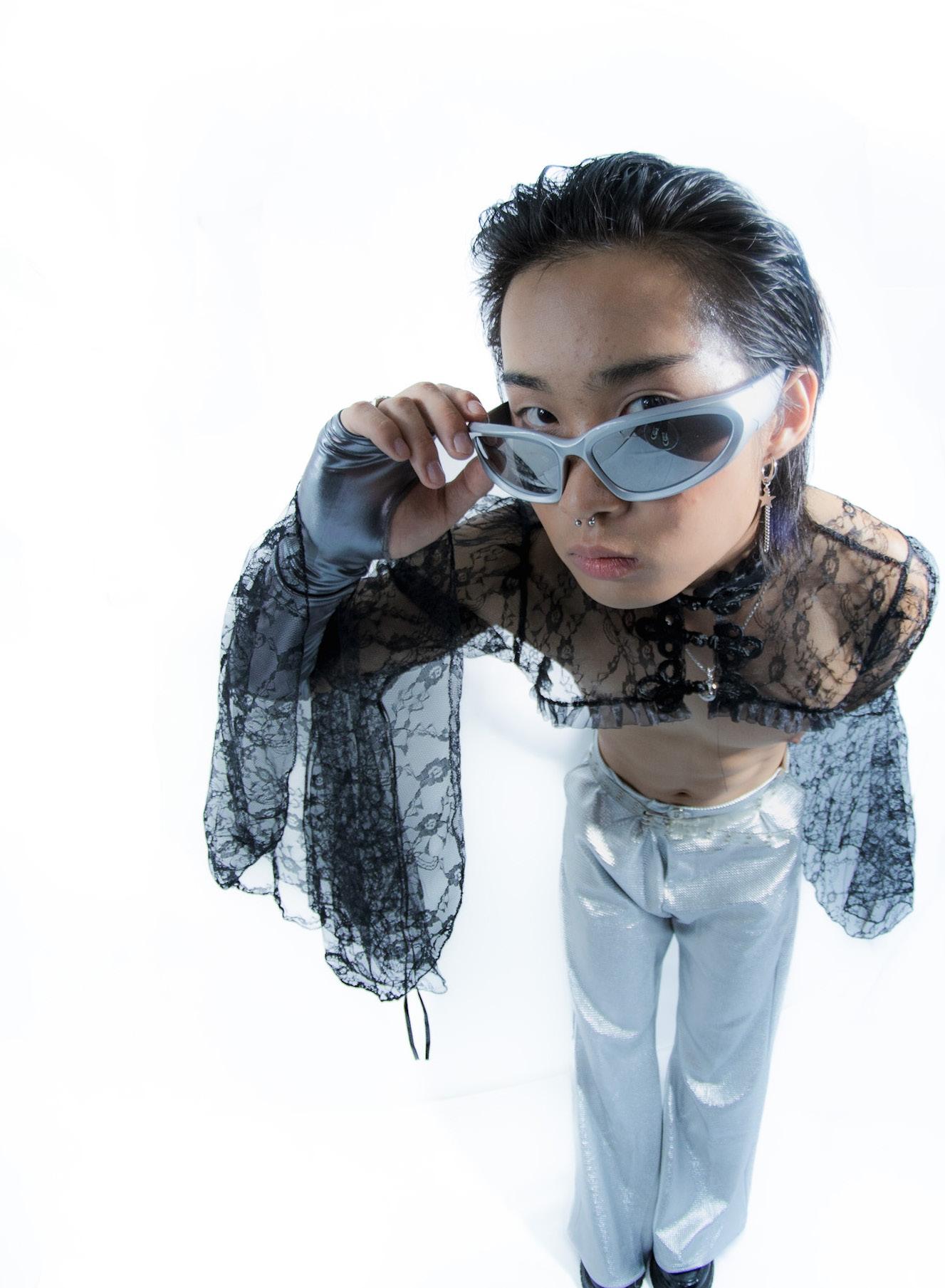



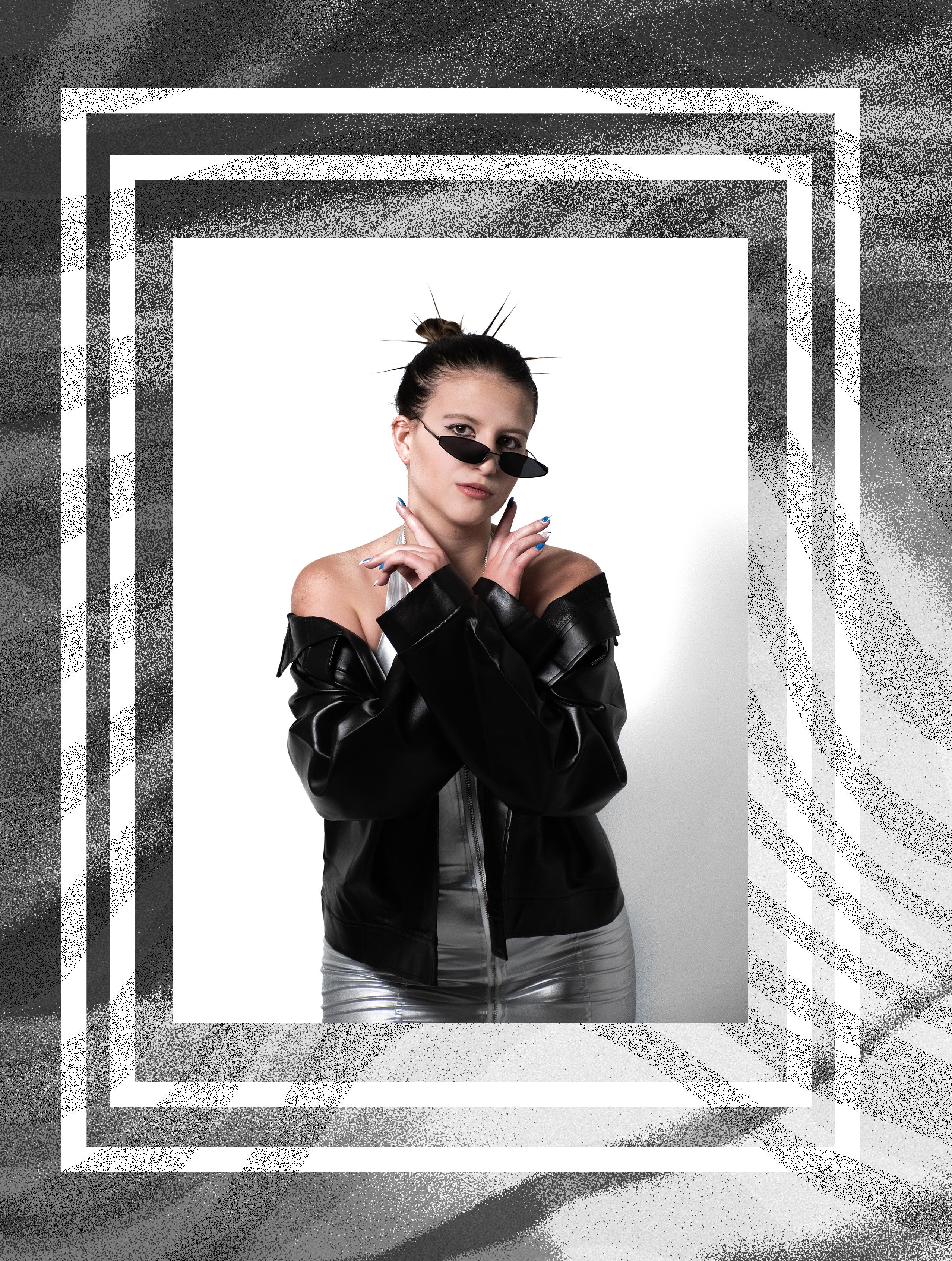

Within the horror genre, there are plenty of times when the audience’s expectations are inverted; it’s what we watch for. The thing you thought was dead isn’t. The most innocent character is actually the killer. The entirety of the ending of “Scream.” However, though the genre is full of plot twists and horrific shock, some expectations and tropes are rarely deferred from. One such aspect is the common character types seen in almost every slasher film and the common fashion trends they follow. No matter what time period these movies are from, each archetype has a distinct style that defines them.
Probably the most well known trope is that of the final girl. This is a female character who ends up surviving the movie, usually alone. She is pretty easy to spot, as she’s usually the main character, however, her costuming is also a dead giveaway. These characters always dress femininely but modestly. Their outfits are often academic and kind of preppy, yet simple. They wear a lot of sweaters, florals, button-ups, and pastels or soft colors. And their shoes are always flats, obviously. Perhaps the final girl who sticks to these style conventions the best is Laurie Strode from Carpenter’s 1978 “Halloween”. Her outfit in the beginning of the movie consists of a studious turtleneck, cardigan, and floral skirt, and then in her most recognizable outfit she sports a light blue button up and jeans.
The next character you are likely to notice will probably be the best friend. This is the final girl’s closest friend, but it is also a character who does the exact opposite of every one of Randy’s rules for surviving horror movies in that one scene from “Scream.”A perfect example of this character is Tatum Riley, also from Wes Craven’s “Scream.” Her party outfit with the green turtleneck and the rainbow tie dye skirt is colorful and attention-grabbing. This type of character will always stand out, with bright colors and more eccentric clothing. Her outfit choices are usually more revealing, with short skirts, crop tops, or low plunging shirts. She is definitely allowed to wear heels, though she might end up regretting it in the end–the price we pay for fashion.
Although the best friend is definitely rebellious, she is nothing compared to the rebel. They are most likely the best friend’s boyfriend. He dresses exactly how you’d expect, very punk/ grunge in dark colors and distressed clothes. His signature fabrics are leather and denim, to match his tough guy attitude. Rod from the 1984 film “Nightmare on Elm Street,” exemplifies this type of rebellion. With his leather jacket over no shirt and jeans, his rebel look peaks when he’s on the run from the police after Tina’s untimely end.
One of the most loveable characters is the good guy. They are not in every horror movie, but when they are, they will have you rooting for their survival the whole time. They get sucked into the horror due to their willingness to do anything for their friends and significant others. They will typically be dressed in lighter colors, matching the final girl. In fact, most of their style matches the final girl as they are usually a couple. Their style could be academic, sporty, or both, but it’s usually preppy and modest. Their style staples are varsity jackets, jerseys, and or sweater vests and collared shirts. Glen Lantz, also in “Nightmare on Elm Street”, is a great example of this archetype. His famous cropped football jersey look is absolutely iconic, and his grey sweater vest perfectly matches Nancy’s pink one later in the movie.
The loudest character on screen will probably be the jokester. Not to be confused with the rebel, this character can be kind of hard to like. He takes every joke too far and ignores others’ feelings. His loud mouth is usually complemented by bright, bold-colored clothing and a popular, trendy, or sporty sense of style. They go for basic bottoms such as jeans or khakis, but this is quickly outshined by their choice of shirt, which consists of colorful t-shirts and polos; they can also have varsity jackets and jerseys, but their color scheme is usually harsher. Ned Rubenstein from “Friday the 13th”is exactly this type of character. While everyone else in that movie is in typical earth-tones (or at least toneddown) outdoorsy clothes, he comes in strong with a bright red t-shirt and jean cutoff shorts.
Though their style is shared among many iterations of these characters, the fashion in horror movies is severely underrated. Each of these distinct styles helps to characterize and deepen the characters seen in horror films, even if that characterization is within common archetypes. And some of these outfits or outfit trends are as famous as the movies themselves.

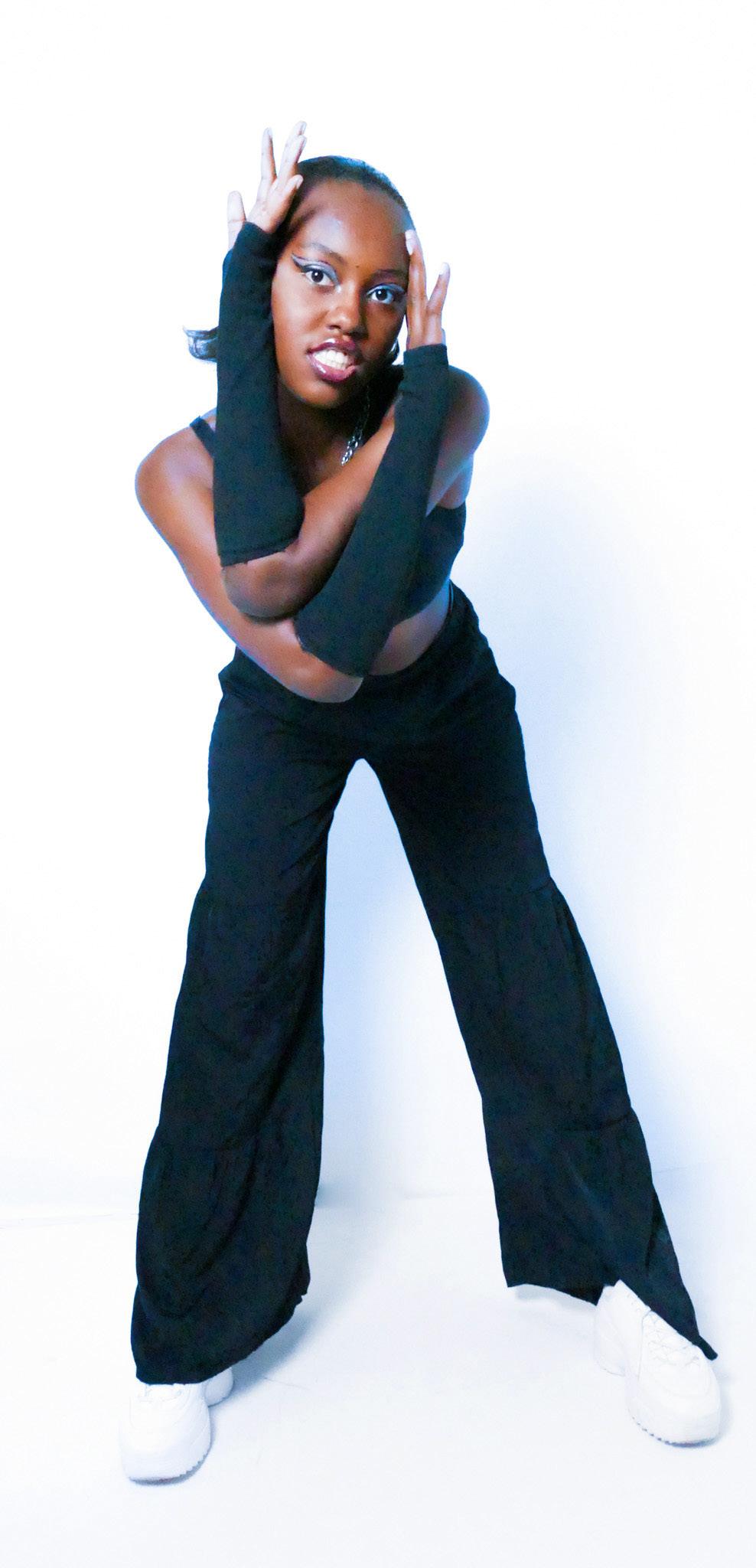
You may have heard of the new and futuristic city in Saudi Arabia, or maybe you haven’t. Nonetheless, the future is on the horizon, and this city is just the beginning. Saudi Arabia is located right in the center of the Middle East, and it is the biggest country there. Recently, the nation has announced they are building a new line city, called THE LINE, in the region of Neom. It is a city designed to be 200 meters wide (less than a mile), 170 km (105.6 miles) long, and 500 meters (about 2,000 feet) above sea level. It has been revealed that about 9 million people could live in this futuristic city. It reminds you of Divergent or the Matrix, doesn’t it? In fact, the news of THE LINE has already started to spread. Ellie Keegan, a freshman at CU Boulder, told me she “saw it only one time through TikTok, but it looked cool and interesting. It reminded me of the Capital in the Hunger Games with the way it looked.” TikTok has actually been one of the biggest social media sites to spread the word about the vertical city. Hopefully, the media can continue to inform people about the great change coming to our world. What’s even better about it is there won’t be any cars, roads, or emissions as everything you could possibly need is within a five-minute walk. Ellie commented on this, saying, “people will like how close they are to their family and friends, and they’ll enjoy the convenience of it too.” Ellie may be right. Many countries, such as China and Italy, value family over everything else and will enjoy having their family close to them for help. This is one of the many attractions of the futuristic city. This means that 100% of the city will run on renewable energy, and 95% of the land will be used for nature to grow. If more and more cities are
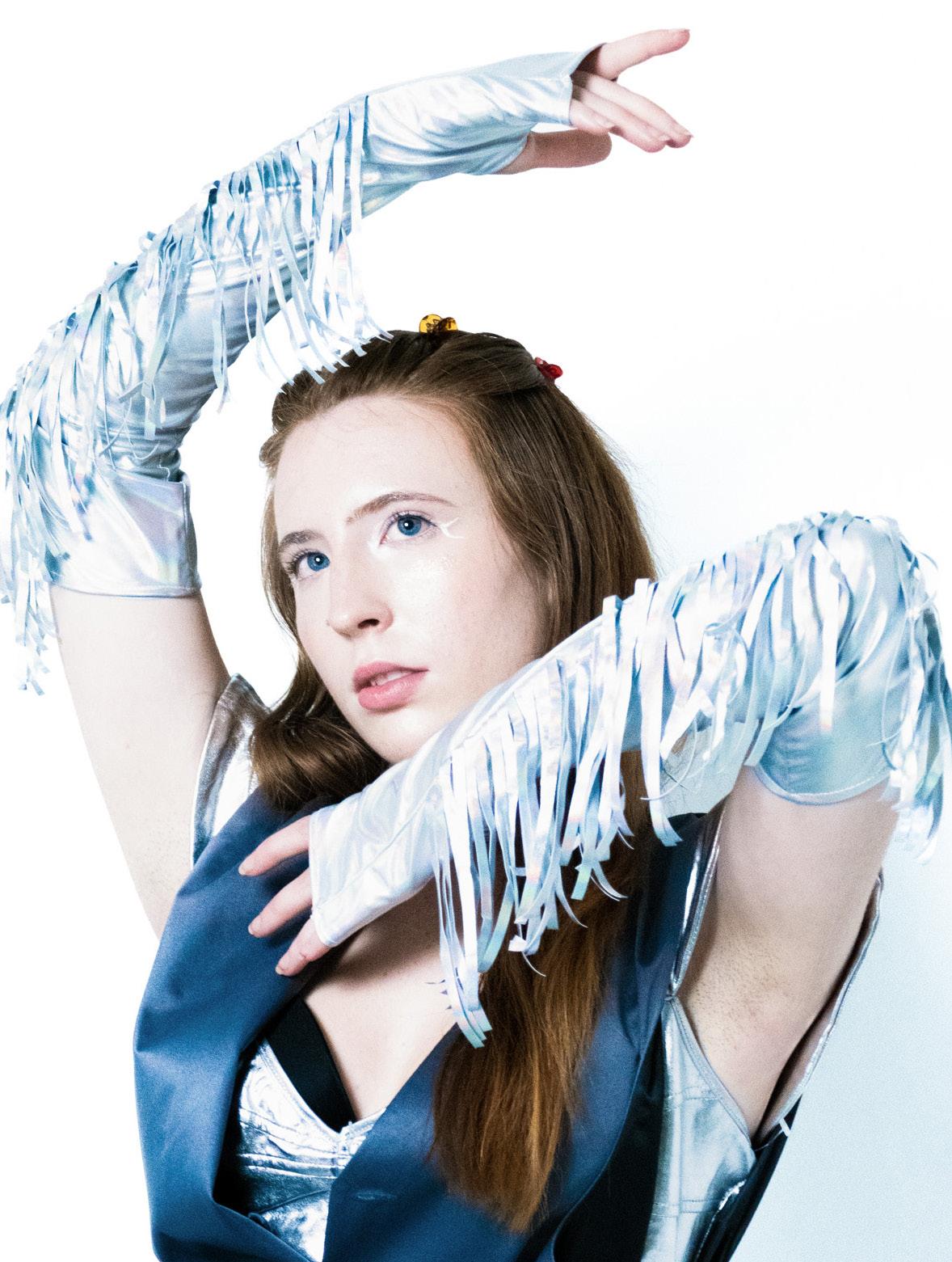
created to model this one, climate change will continue to get better as no carbon would be used as much as now. THE LINE will also have new and completely real technologies that will create the perfect climate all year round and high-speed rails. The rails are so fast that it would take about 20 minutes to go from one end to the other, adding to the city’s convenience. The technology will make everything a lot more convenient while being climate safe. Don’t worry, though; there will still be plenty of green open space in the city, especially as that is the main focus of the design. Saudi Arabia is already working on jobs that can employ about 380,000 people by 2030 in THE LINE. And that’s only to maintain the city! Think of all the other jobs that can be available as businesses start to grow there. Many famous companies have started to fund the building of THE LINE, such as Ocean X, Saudia Airlines, and, probably, the most famous, Mercedes. Not to mention, with the jobs that most people will be able to have and no car insurance, fuel, or parking, this will mean that people will have a more disposable income. The bottom line is (see what I did there) that the new city is real and it’s coming soon. In fact, Saudi Arabia has already started construction in Neom. It is your choice whether you want to live there or not, but I suspect that if THE LINE works out, many other cities will start to build their own lines and fast. People will do whatever it takes to save our world from climate change and overpopulation, including building a city that is vertical, which we previously believed to be impossible. The impossible future has now become not only real but smart!




Julia Belian | Editor-in-Chief
Aspen Pasikov | Deputy Editor
Aidan Jones | Creative Director
Edwin McArther | Chief Graphic Designer
Mia DiNorcia | Co-Fashion Director
Osborne Weng | Co-Fashion Director
Kyle Kim | Co-Photography Director
Evan Wang | Co-Photography Director
Cristian Abood | Photography Editor
Gia Boudreau | Photography Editor
Tylyn King | Photography Editor
Lucia Johnson | Co-Videography Director
Windrem Smith | Co-Videography Director
Garrett Botsch | Co-Modeling Director
Ashlyn Lee | Co-Modeling Director
Anya Keena | Modeling Assistant
Abigail Wiegmann | Journalism Director
Grace Thorburn | Journalism Editor
Carlee Bleeker | Head Copy Editor
Nic Tamayo | Co-Copy Editor
Sam Schechterman | Blog Director
Kohanna McCrary | Co-Music Director
Marley Pratt | Co-Music Director
Carly Killorin | Co-Marketing Director
Will Elliot | Co-Marketing Director
Cici Dunham | Marketing Assistant
Alessia Redwine | Co-Art Curator
Julian Young | Co-Art Curator
Camila Gutiérrez | Make-up Director
Saeed Alremeithi
Mia Archuleta
Emma Blackburn
Ben Bridy
Gwen Burke
Mia DiNorcia
Caite Eisele
Rocky Erdenebat
Amelia Fichera
Caden Foppe
Grace Hutchens
Nemat Khalifa
Kyle Kim
Ashlyn Lee
Edwin McArther
Kohanna McCrary Nick Milushev
Kam Monsefi
Sophie Moore
Dylan Murphy
Nick Pratt
Alessia Redwine
Rachel Shea
Jude Shaw
Cristian Abood
Sebastian Arnavat
Matthew Batchelder
Andrew Batilo
Sage Phelps-Fast
Tylyn King
Kyle Kim Evan Wang
 Eva Corral
Olivia Gewanter
Camila Gutiérrez
Hallie Hannum
Anya Keena
Abigail Wiegmann
Eva Corral
Olivia Gewanter
Camila Gutiérrez
Hallie Hannum
Anya Keena
Abigail Wiegmann
